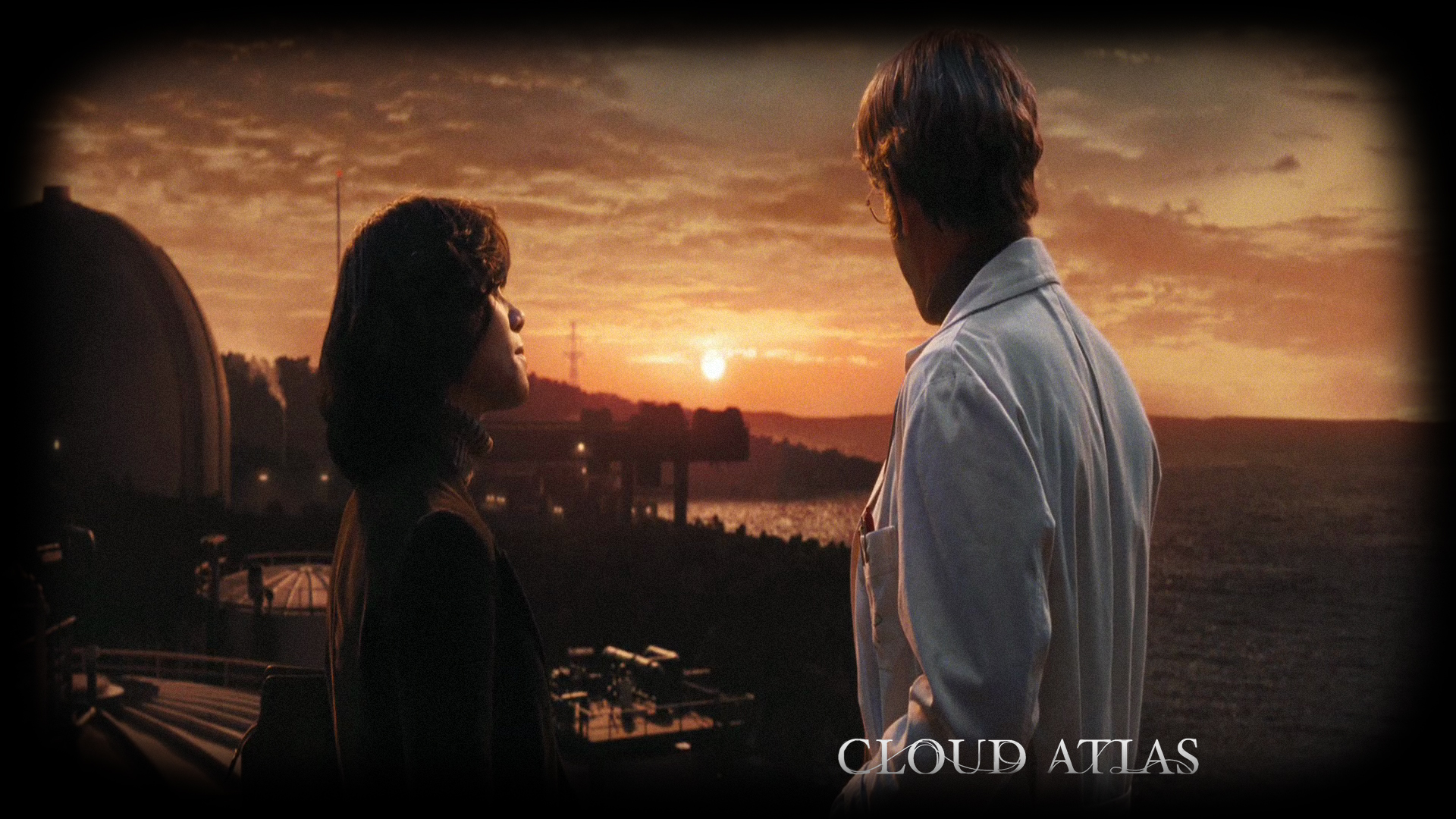Watching Cloud Atlas feels like watching 2001: A Space Odyssey. In its time, 2001 was panned by audiences and critics alike; after a few generations, it is now considered a modern classic. Time has only helped 2001’s reputation. Cloud Atlas I think will develop a similar backlash, which is too bad, because there is so much to digest in the movie that Cloud Atlas begs for multiple viewings and university classes built around it. Along with Prometheus, Cloud Atlas proves that thought-provoking, challenging big-budget movies are not a thing of the past and have a place in today’s society.
Let’s sum up the 6 simultaneous plots (it is a 3 hour movie after all) from past to future:
1. Circa 1850, Adam Ewing (Jim Sturgess) gets sick on a boat and is being “helped” by Dr. Henry Goose (Tom Hanks); in the meantime, Ewing helps protect Autua (David Gyasi), a formerly enslaved Moriori tribesman.
2. In 1931 Belgium, young composer Robert Frobisher (Ben Whishaw) attempts to extract one last great symphony out of Vyvyan Ayrs (Jim Broadbent) told through letters to his gay lover, Rufus Sixsmith (James D’Arcy).
3. In California 1975, an older Sixsmith (D’Arcy), a nuclear physicist/whistleblower, gives his information to Luisa Rey (Halle Berry), a journalist whom he shares an apartment complex with.
4. In 2012 England, publicist Timothy Cavendish (Broadbent), flees some clients and winds up trapped in a retirement home from which he cannot escape.
5. In Nea So Seoul in the future, Sonmi-451 (Doona Bae), a fabricant (clone) who works in a fast food restaurant is interviewed before her execution because of a rebellion she caused.
6. On an island after an Apocalypse-type event, Zachry ( Hanks), a primitive tribesman, is visited by Meronym (Berry), a member of the last technologically advanced society in existence.
Cloud Atlas is a game-changer in the movie-watching world. In order to receive the most out of Cloud Atlas possible, prior knowledge of the story is almost a requisite to keep yourself from juggling looking for themes, faces, plot twists, etc. This could do wonders for movies based on books in that the books could now be required reading before watching a movie. Cloud Atlas also uses story, time AND generic human forms to express multiple themes. Most movies use either time (Looper) or human forms (Dark City) to make one set of points. Cloud Atlas upps the movie themes to the third dimension.
It’s amazing the movie is as comprehensible as it is. Credit goes to the Wachowskis and Tom Twyker for structuring each part to coincide with the generic storytelling technique of exposition, plot, climax, denouement. As complicated and interesting keeping the characters and themes is, the stories themselves each have either seamless stopping points or interweaving voiceovers that make the storytelling side easy to understand.
The reason Cloud Atlas will be picked apart by generations of viewers is the layers of themes that is showcases. Each story has its own theme that all people learn be it love, fear, truth, etc. From there, these themes can be followed through time (such as bravery in the Hanks story) or through character (deception from Hugo Weaving). Layering core themes over three levels means Cloud Atlas makes themes themselves one of the moving parts of a story.
Cloud Atlas’s biggest failing is the varying interest levels of all of these stories. The Wachowskis and Twyker balance humor and drama well, but not all the stories warrant the same amount of screen time. The two future stories need the most setup since they are societies we have never seen before, leaving the other 4 to try to grab the attention of the viewer with an interesting plot. Story 3 earns its screen time, but stories 1,2, and 4 do not generate enough of a movie plotline to be as interesting as the other three. They are still necessary to show connections, but the weaker stories cause Cloud Atlas to lag in the middle sections.
The actors deserve lots of credit since most of them play one character line each. It is hard to single out one over another, because they are all very strong. The two biggest surprises are some of the willing costume turns of Hugh Grant’s characters, and Doona Bae’s work as Sonmi-451. Regardless, playing ID with each new character is one of the unique delights of Cloud Atlas compared to other movies.
Cloud Atlas was supposed to be unfilmable. The Wachowskis and Tom Twyker took that as a challenge and crafted what could be a masterpiece to a future generation. Cloud Atlas is a pioneering piece of filmmaking that caused lots of movie-major underclassmen to drool in awe at what they were witnessing. Not bad for two bullied kids from the South Side of Chicago.

